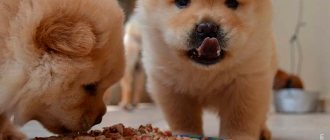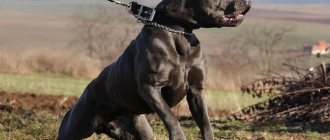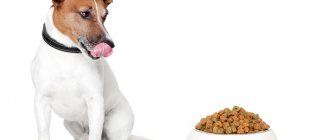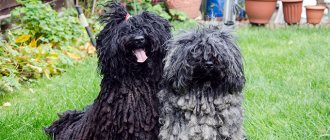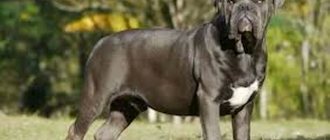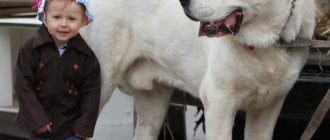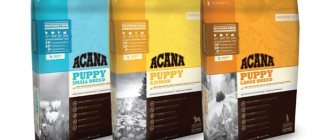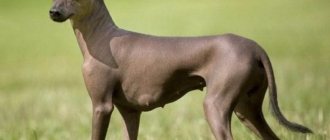According to statistics, 10-20% of the world's population suffers from allergies to dogs. So, will these people never have a four-legged friend? Not at all: if you are allergic, pay attention to the wonderful representatives of hypoallergenic breeds. But remember that there is no such thing as a 100% hypoallergenic dog.
There are breeds that produce a small amount of allergens - so small that they practically do not cause an allergic reaction in an owner who is sensitive to them. Research has found that most dog allergies are allergies to animal dander. Therefore, it is worth paying attention to breeds with minimal highlighting. Dogs' coat is significantly renewed approximately every three weeks - at the same time, skin scales separate, circulate in the air, and settle on furniture, walls, and sleeping places, presenting a serious problem for a sensitive owner.
Dandruff is the main, but not the only reason:
- Dirt. Street garbage, dust, plant pollen that stick to the fur and skin of an animal are also a source of allergies.
- Wool. Fluffy, long-haired animals with a double undercoat are the most undesirable pets for allergy sufferers. These pets will shed profusely all year round.
Why do allergy sufferers react acutely to the presence of dogs nearby?
You should not think that hypoallergenic dog breeds completely eliminate the occurrence of allergic reactions - they minimize it. Proteins, which rank high on the list of allergens, are found in animal fur, saliva, and dander. The entry of animal protein microparticles into the respiratory tract causes irritation.
Breeds with little shedding and little salivation are suitable for those who suffer from allergies to dogs. However, for overly sensitive people, even hairless breeds of animals can become an irritant.
Scientists have found that the same breed can cause irritation in some people with allergies, but not in others. All this is very individual and nothing can be predicted in advance. It is also not always possible to find a dog that does not shed or have excess saliva.
The size of the animal should be considered first. Large pets are at risk. If a dog constantly and often barks, then the release of allergens through saliva will provoke allergic irritations in its owner. It is better to choose a balanced small dog with a friendly character as a companion.
What you need to know about animal allergies
An allergic reaction occurs as a result of hypersensitivity to a specific irritant. There are many types of allergies, so the lack of fur in a pet is far from the only indicator of hypoallergenicity.
There are no dogs to which humans are completely allergic. But there are those who cause a less strong reaction. In addition to fur, allergens include a special type of protein contained in dog saliva, urine, sweat, secretions of the sebaceous glands, dandruff and particles of dead skin.
You can find out the exact source of the disease with the help of an allergological study. It is recommended to choose a four-legged pet based on its results.
Common mistake
It is a misconception that allergies depend on the length of the animal's fur - the hairier the pet, the more severe the allergic reactions.
People who are completely confident in their beliefs breed breeds with short and smooth hair. Usually this:
- Dobermans;
- dachshunds;
- amstaffs;
- Pinschers.
Breeders believe that if there is little wool, the dog will not shed at all. Time passes and the whole house is strewn with small “needles” of fur, which the dog constantly loses. You have to comb out the carpet, collect it on the sofa, and constantly find it on your clothes.
Short-haired breeds have the peculiarity of shedding all year round. Their fur falls off every day. Experienced owners have special brushes and brush their pet every day.
Let's go visit
Quite often, the question of the compatibility of pets and bronchial asthma arises among those asthmatics who are going to visit people who have furry pets. To avoid serious problems, it is better to follow the recommendations of specialists:
- When planning your visit, review your diet and avoid consuming allergenic foods. Stick to this diet for a couple of days.
- Be sure to inform the apartment owner if you have allergies. Ask that your pet be sent to another room, cleaned and aired before your visit.
- Do not stay in a house where there is a pet for a long time (if there is a risk of seizures).
- Be sure to take the necessary medications with you to relieve suffocation (if it does occur).
- When you get home, take off all your clothes and put them in the wash. Take a shower yourself and take an antihistamine. Also try to drink plenty of fluids to cleanse your body.
These measures will help you avoid another attack of bronchial asthma. But, of course, they do not provide a 100% guarantee.
Scientists have concluded that with regular contact with allergens in the first years of life, the risk of developing bronchial asthma in a child decreases by an order of magnitude. Therefore, you should not give up your pet after seeing a couple of lines on the test or arriving from the maternity hospital.
Reviews from dog breeders
Margot: From my own experience, I can say that there are no breeds that are less or more allergenic. It's all about the individuality of the body and its reactions to animal protein. For me, once it was enough to visit a house where the same protein allergen was present a couple of weeks ago; after going to this house, my asthma worsened. Now I have been living with a low-shedding animal for several years and there are no symptoms of the disease.
Alexander: Allergy to animal fur is called that for the sake of the people, so as not to have to explain to people for a long time that there is no true allergy to fur and what protein is. The most common culprits of diseases are those with long hair, since these breeds are usually large, have a large area and body weight. They lick their bodies with saliva, the same protein irritant. The same thing is observed in hairless breeds, because they also lick the body, but they are much smaller in build. Thus, a reaction can occur even to air containing animal particles. The point is not in the dogs and cats themselves, but in the body’s tendency to become allergenic.
Taking into account the reviews, it is finally worth emphasizing that in nature everything is purely individual. No two dogs are identical, just like no two people are identical. The breed for a person with asthma or allergies is also selected on an individual basis.
To understand how your body reacts to a certain breed, go to a kennel or visit where there is such a dog. Talk to her for a while and watch your reaction. Pets can have completely different effects on the human body. Some will immediately experience an exacerbation, while others will not have any reactions at all.
It is possible to have a dog
If you really want to have a pet, try to choose one from among those representatives that will not cause problems for the allergy sufferer in your family. Introducing a “parade” of purebred dogs that will minimize allergies in their owners.
Bichon Frize
French lapdogs, or Bichons, have snow-white, curly hair. These small dogs have a cheerful and intelligent disposition. They are easy to train, become attached to their owners and become favorites of children and adults. This breed was once highly valued at the courts of French monarchs.
Individuals have a very wide skull. The hair is cut in such a way that the dog's head turns into a ball. Button eyes and a black nose stand out against a snow-white background. The animal's ears are small and hang down. The tail curls over the back. The soft, silky coat of this amazing breed practically does not shed.
Yorkshire Terrier
These are small dogs that participate in active games with dexterity and passion. Smart pets relate well to other pets, showing a kind and cheerful disposition in their interactions. However, this does not apply to strangers. Terriers protect their territory well.
The peculiarity of this breed is its intelligent and expressive eyes, as well as luxurious fur that falls on both sides of its straight back. Dogs' tails are docked and are almost invisible.
The cute face is also covered with fur, and the ears are erect. This breed has a distinctive color - the head, paws and chest are golden brown. And the body is covered with fur of a steel-blue hue. Moreover, the colors are strictly differentiated and do not mix. The dog is very proud of its beauty.
Basenji
These dogs are famous for their very short fur. The breed is very clean, so the wool has virtually no odor. These dogs are considered hypoallergenic.
They prefer to whine rather than bark. They have an independent disposition, are gentle, intelligent and quite energetic. They are classified as hunting breeds.
Animals are beautiful and graceful. The head is set proudly on a curved neck, the body is light, and the paws are high. The intelligent eyes of a self-confident animal look carefully at the world around them. The Basenji is dark red or black on the body. The tip of the tail, paws and chest are white. Some individuals have a white collar and a stripe on the head.
American Bulldog
This breed has not changed since its inception. The closest relatives of these serious dogs are English bulldogs. Their body is powerful and athletic. The animal is of medium size, but has highly developed agility, courage and fighting qualities.
The dog is smart, hardy and loyal. Her eyes betray alertness and temperament. The whole appearance of this beautiful animal evokes admiration and respect. This formidable dog has an outgoing and friendly character. American bulldogs are used to guard objects and for hunting.
Representatives of this breed are famous for their proportional build and strong bones. Their head is large and quite wide. The muzzle is short, the ears are hanging, the tail is long. There are dense folds of skin on the neck and head. The fur is very short. Its length does not exceed one and a half centimeters.
Coton de Tulear
This breed can be kept by people prone to allergies - the dog never sheds. The breeders working on developing this breed tried, first of all, to create a faithful friend and companion. And they did it just fine. The dog is distinguished by its friendliness, playful and kind disposition.
The dog becomes a full member of the family, becoming strongly attached to everyone. The animal is intelligent and quite sociable. The greatest happiness for him is to constantly be near his owner.
Papillon
This breed can extremely rarely cause allergies in children and adults. She does not have seasonal shedding, and the peculiar smell of dog hair is also not felt.
The dog is very fragile. Her favorite pastime is to sit in her arms and cuddle with her owner. She is sociable and enthusiastically participates in children's games. She gets along well with other pets, especially if she is raised with them.
Requires careful treatment and attention. She is very nimble and can get injured during games - children can accidentally harm her.
Chihuahua
The coat of this breed does not cause allergies. The pet treats small children with tenderness and love. The dog is considered the smallest in the world. She becomes very attached to her owner and can even be jealous of him.
Chihuahuas have a non-vicious, sociable character. Young children are allowed to play with themselves and can tolerate their “manifestations of love” ad infinitum. Strangers are greeted very warily, their every move being closely watched.
Animals are very smart and neat. They have a good memory and are easy to train. They are quite peaceful with other animals, but they always try to take a leading position among pets.
Griffon or Petit Brabançon
A favorite among children, it rarely causes allergies. This dog is easy to keep even in a small apartment. He is easily tamed to a tray or diaper, and can skip walking.
Funny Brabançon has a very cute face. He has expressive facial expressions, which often evoke surprise at his “humanity.” A friendly character is manifested in relation to other pets, even cats.
He loves to play. An even more favorite activity is “hugs and kisses.” He becomes attached to his owners and tries to give him all his tenderness. Loneliness is quite difficult to bear. It is easy to train, showing extraordinary abilities and intelligence. He senses his owner’s emotions very well and always tries to adapt to his mood.
French Bulldog
They love to chase cats, participate in games and pranks. They are absolutely not aggressive, friendly, love children. In their sleep, these dogs snore funny and cannot stand the heat. They are so charming that their owners simply dote on them. Therefore, it is necessary to treat French bulldogs more strictly, otherwise the dog owner will quickly follow his whims and will not know what to do with such pranksters.
For asthmatic children
If one of the family members suffers from asthma, but there is a great desire to get a dog, the choice of breed should be approached very carefully. There are a number of breeds that are considered the most suitable for people with this disease and in most cases do not cause allergies in children. These include:
- Border Terrier. The breed is distinguished by its friendliness and attentiveness. They get along great with children. They have a balanced temperament, but at the same time love active games. Children won't be bored with them.
Caring for such dogs is not difficult. Their coat is hard with a dense undercoat, but they do not shed, which means they are perfect for allergy sufferers, including people suffering from asthma. Border Terriers never have their hair cut; they only need to be brushed a few times a week.
- Irish Water Spaniel. Dogs of this breed are medium in size and have curly hair. The dog is very active and friendly towards children. The absence of shedding makes it hypoallergenic.
The floor in the house will never be strewn with her hair; hairs can only be seen on brushes after combing. Sometimes it is cut to make the fur easier to comb.
- Australian Labradoodle . Dogs of this breed are ideal for families with children. They are loyal, cheerful and friendly. Labradoodles do not shed and do not have an unpleasant odor.
Funny Labrador mixes
Dogs are highly sensitive to humans and can even sense an approaching asthma attack . No special care is required for the coat; you only need to cut it once every 2 months.
Hairless dog breeds
Among dogs that do not have hair, there are large and small breeds׃
- American white-headed terrier;
- Mexican naked;
- Peruvian naked;
- Chinese Crested.
Let's look at the popular ones of these breeds.
American Terrier
This breed has so little fur that it requires virtually no grooming. The small animal has an accommodating, friendly character. It can be kept even in a relatively small apartment.
The dog is very smart and calm. She is affectionate and playful with children and tolerates the presence of other dogs in the house quite calmly. Representatives of this breed have a pointed nose and an oval head. The eyes are slanted and rather protruding. The ears are erect, the tail is thick, the back is straight. The skin must be protected from cold and sunlight.
Chinese Crested
This breed looks quite unusual. There are two varieties. One has no fur at all. There is only long hair on the paws, tail, and a silk crest on the head. Hairless skin is soft and smooth.
The second species has soft, long and thin hair that completely covers the animal's body. Dogs of this variety are also called “powder puff dogs.” Surprisingly, representatives of both species can be born in the same litter.
These hypoallergenic dogs look very graceful and elegant. They have a cheerful and cheerful character. Children are delighted with these pets, and the animals respond to them with devotion and love.
The muzzle of the puffballs is elongated, the head is wedge-shaped. Large erect ears are usually cropped. Almond-shaped eyes are set wide apart. They shine with intelligence and goodwill. The eye color is the same as the main color, which can be quite different, but always with the addition of white shades.
Peruvian naked
Representatives of this breed have a completely naked body, as there is no hair. The dog gets along well with children and adults, is quite intelligent and friendly. She loves her owners devotedly and tenderly. This dog is credited with the ability to heal and take on the pain of others.
The skin color is usually yellow-brown, less often white. When exposed to the sun, it can change from dark bronze to almost black. If you get yourself a Peruvian, you will be surprised by his noble disposition. He is hardy, agile and wary of strangers. Size ranges from relatively small to large.
Top 4 best
The American Kennel Club has identified the four best hypoallergenic dog breeds:
- Poodle - has a curly coat without undercoat, practically does not shed. The likelihood of dandruff in these dogs is very low, but regular coat care is required. The breed's character is friendly and very obedient.
- Shih Tzu - a small breed dog, perfect for living in an apartment. She has silky long hair that does not shed. Dead hairs are removed by combing. The Shih Tzu is an active and cheerful four-legged friend.
- Yorkshire Terrier is also a small dog that never sheds or has dandruff and does not cause allergies. It has a special coat structure that resembles human hair. Regular grooming is required to maintain a beautiful appearance.
- Bichon Frize - A miniature friendly dog that will get along with all family members, including other animals. Does not shed or cause allergies, but requires very careful coat care. You need to be prepared to frequently brush and bathe your pet.
Allergic reactions to animals in humans are quite common. Allergies can occur to absolutely any breed of dog. It cannot be said with certainty that hypoallergenic dogs completely exclude the occurrence of an unexpected reaction from the human body .
Read: Cough form of bronchial asthma
Factors such as the dog's lack of shedding and dandruff can significantly reduce the risk of allergies. But even if you have a hypoallergenic dog in your home, you don’t need to neglect standard measures that can reduce the likelihood of developing allergic reactions. In a home where there is a pet, the following conditions must be met:
- regularly do wet cleaning in the apartment using disinfectants;
- the fewer different fluff coverings there are in the room, the better, since allergens will have nowhere to accumulate;
- use an air purifier;
- do not allow the animal to sleep in the bed or on the sofa;
- Provide proper care for the dog and its coat.
Prevention of allergic reactions
To minimize the manifestations of allergies, it is necessary to keep the room clean and regularly wash your pet well. Using a vacuum cleaner and wet cleaning can remove most allergens. This procedure is carried out at least twice a week.
The dog should not be allowed to go to bed with its owners, nor should it be allowed to lie in its favorite chair, on chairs or on the sofa. The soft surface of furniture upholstery is more difficult to clean; besides, a well-mannered pet must clearly understand its place and not sleep with children or adults.
You can install special air purifiers in your apartment that reduce the concentration of allergens. If you have allergies, another family member will have to care for your dog.
To prevent the appearance of a new family member in the apartment from leading to further disappointment, it is advisable to live with the animal for some time before purchasing. Such a test will immediately reveal a negative reaction to the puppy’s fur. It is impossible to become very attached in a short period of time, but this will save the family from a sad separation from an adult animal.
Currently reading:
- Thyroid dysfunction in dogs (hypothyroidism)
- Actions to take in case of an epileptic attack and a shaking dog
- Is it worth it or not to include natural food in your dog’s diet?
- All the reasons for the appearance of dandruff on a dog's coat
Which?
Let's figure out which dog breeds do not cause allergies in humans and whether there are any at all. Unfortunately, it is simply impossible to completely exclude the occurrence of an allergic reaction in a person to an animal . But if you give preference to one of the hypoallergenic breeds, you can significantly improve the situation.
The human body is very individual, and can react completely differently even to two dogs of the same breed. When concluding that a particular type of animal can be classified as hypoallergenic, only healthy representatives are considered, since any disease, especially skin disease, can lead to allergies.
There are several criteria that you need to pay attention to when choosing a four-legged friend for allergy sufferers. They allow the dog to be classified as a hypoallergenic breed, or a breed with a high risk of reaction from the human body.
So, the following points should be taken into account:
- Wool length . Most people think that the less hair on an animal's body, or the shorter it is, the lower the risk that any problems will arise. There is some truth here, but a large number of short-haired breeds shed daily, which means they constantly spread allergens. Allergy sufferers need to pay attention not only to the length of their pet’s fur, but also to the frequency of shedding.
- Size. Among hypoallergenic species, large animals are rarely found. Mostly dogs are small or medium-sized. This reduces the risk of developing the disease. Since the body area is small, fewer allergens can accumulate.
- Salivation . Dog drool is a very dangerous allergen. Many people not only do not like the appearance of constantly dripping drops from their mouths, but they can also lead to severe irritation. Allergy sufferers should completely exclude breeds that are characterized by active salivation.
- Character. Some breeds may bark frequently, which also spreads saliva, which is an allergen. You need to give preference to balanced animals, therefore, when choosing a four-legged friend, you should take a closer look at his character in advance.
Even if you have a hypoallergenic dog in your home, you must follow the rules of caring for it, which also reduces the risk of various reactions from the body.
Following is noteworthy:
Purity. Even if the owner thinks that the dog is absolutely clean and there is no odor, it is still worth bathing it at least once a week. This way you can get rid of the dirt and dandruff that has accumulated on her body. You don't need to bathe your dog more than twice a week.
IMPORTANT! Regular cleaning of the apartment reduces the severity of allergic reactions.
Health. The condition of the pet must be carefully monitored. A dog walking outside is constantly in contact with sources of infection with various diseases. Any skin problems, as well as worms and ticks, are harmful to the health of both animals and humans. Scheduled visits to the veterinarian, vitamins and flea and tick protection are things that need to be taken into account.
Feed. The owner's body can react in a unique way to his pet's food. This problem is completely solvable. Firstly, you can switch the dog to natural food, or you can simply choose a different brand of food.
